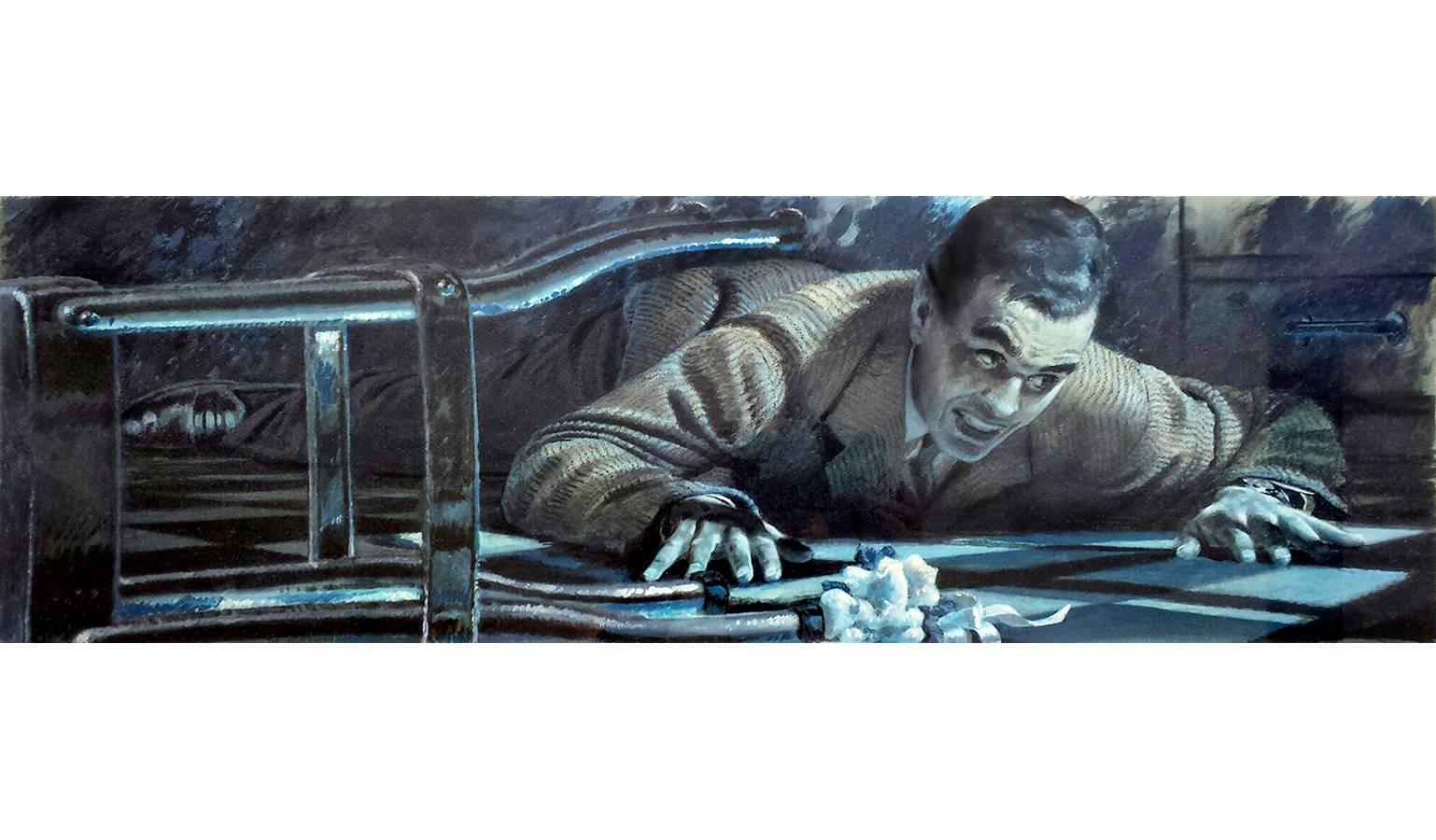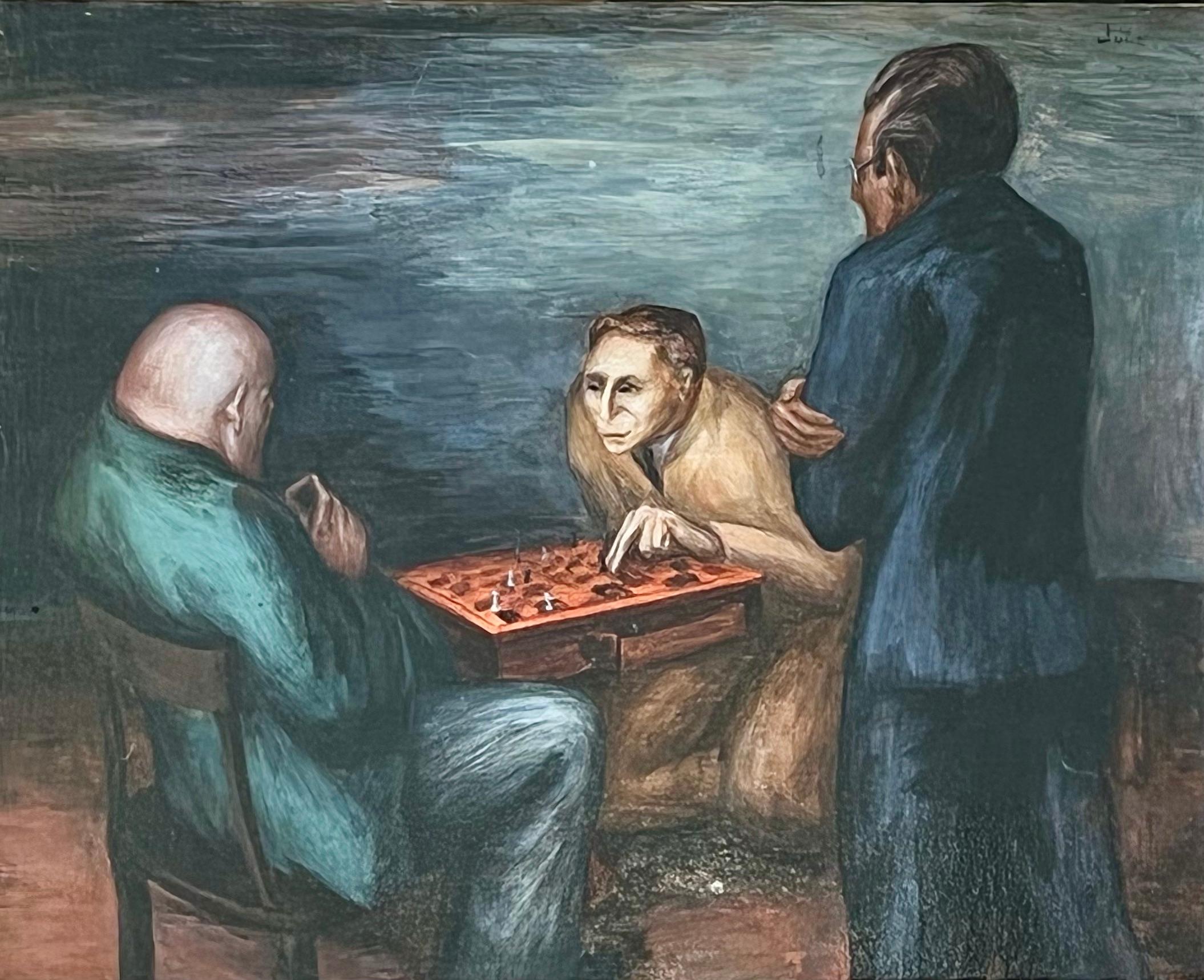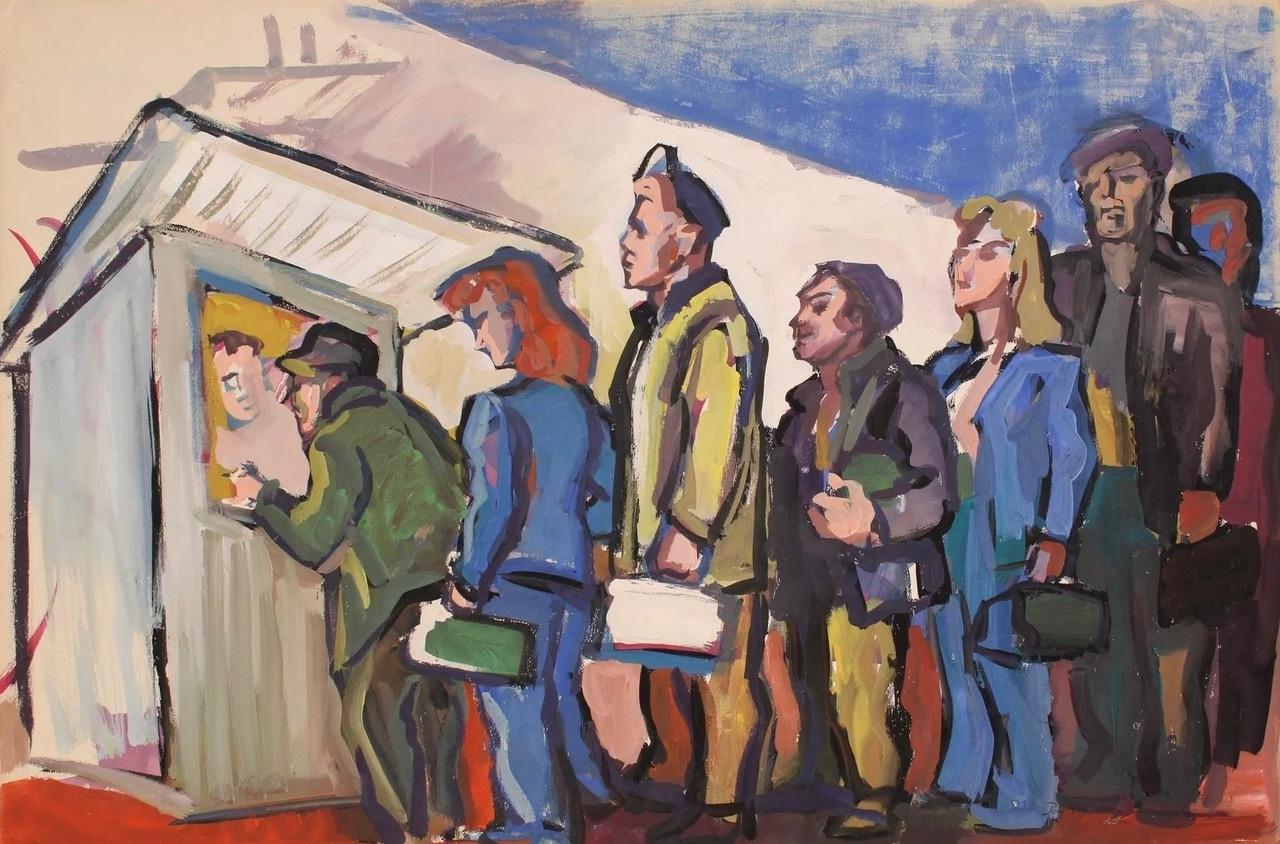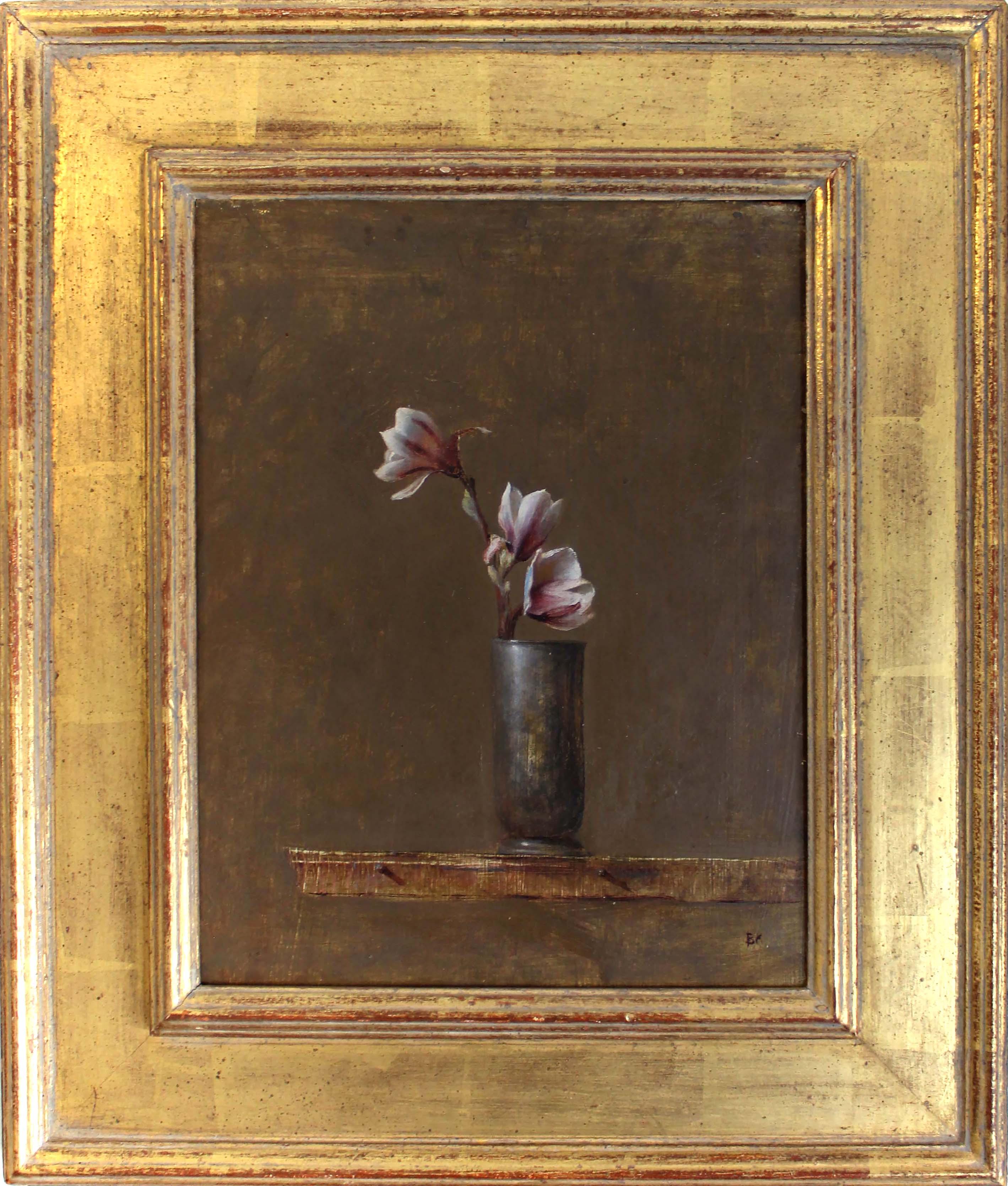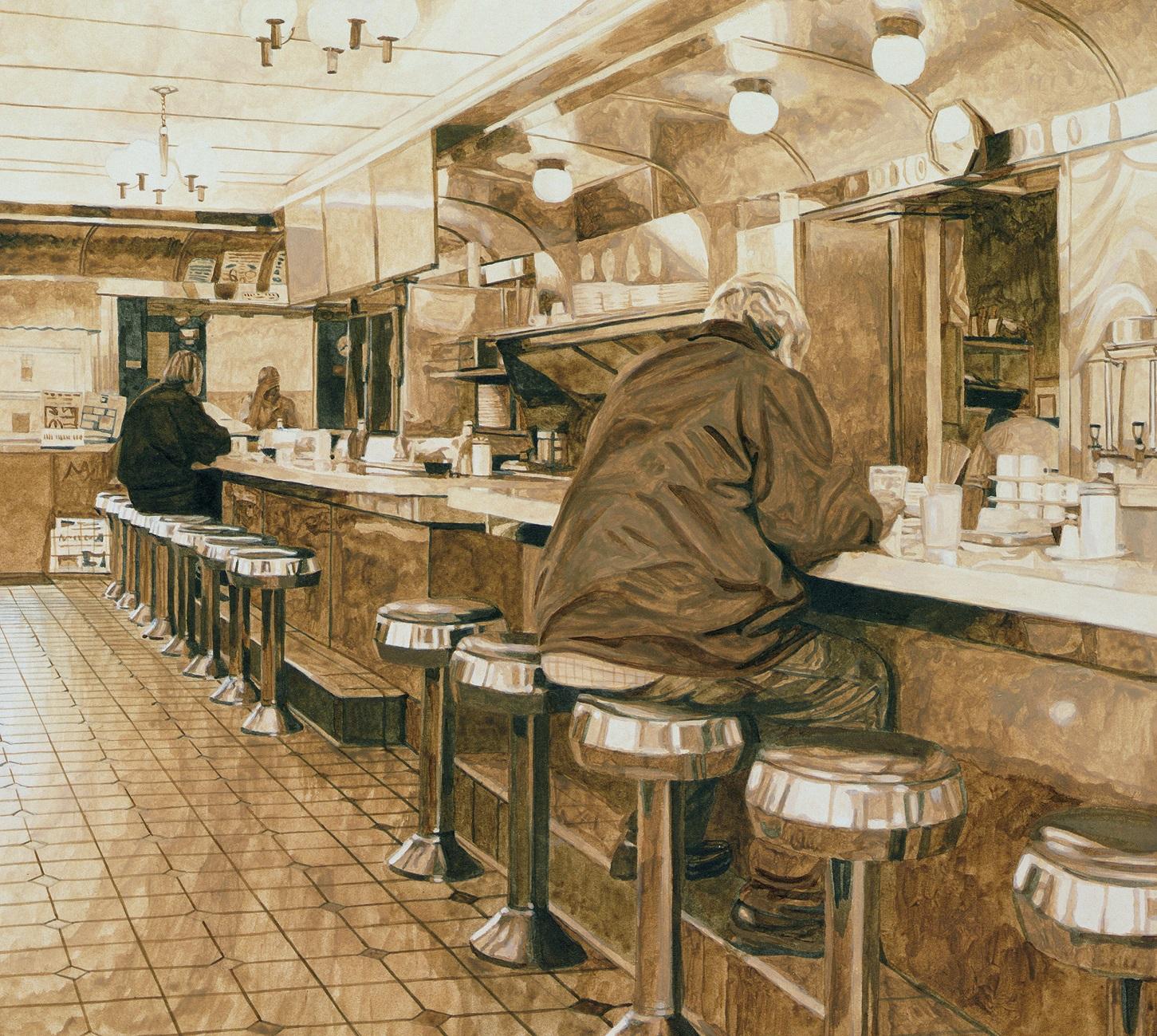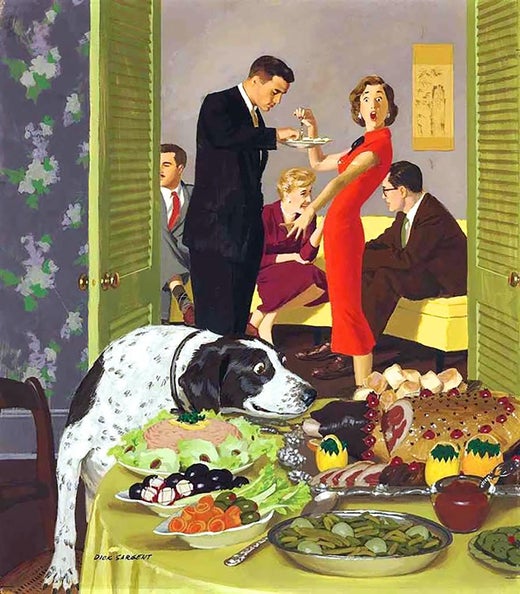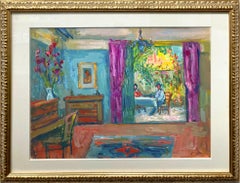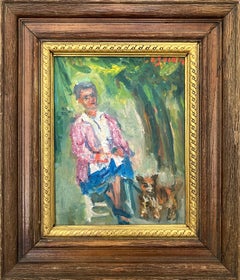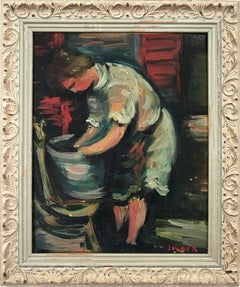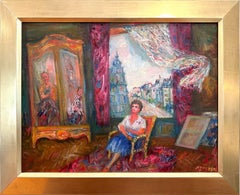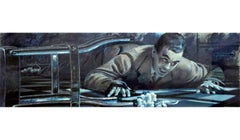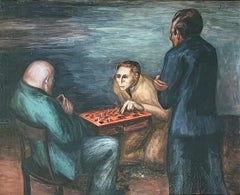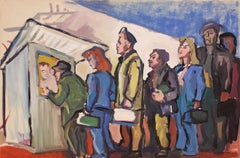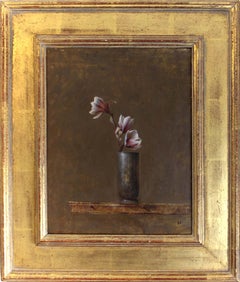Items Similar to 1950s Original Illustration of Man at Breakfast Table "Post" Advertisement
Want more images or videos?
Request additional images or videos from the seller
1 of 14
Richard Sargent1950s Original Illustration of Man at Breakfast Table "Post" Advertisement1958
1958
On Hold
$25,000
On Hold
£18,988.12
On Hold
€21,839.81
On Hold
CA$34,929.90
On Hold
A$38,950.79
On Hold
CHF 20,322.86
On Hold
MX$477,940.89
On Hold
NOK 258,677.66
On Hold
SEK 245,091.47
On Hold
DKK 162,998.55
Shipping
Retrieving quote...The 1stDibs Promise:
Authenticity Guarantee,
Money-Back Guarantee,
24-Hour Cancellation
About the Item
This piece was completed and published in "This Week Magazine" May 4, 1958 for an advetisment with "Post." The slogan reads in the magazine above the illustration:
"Any Cereal my family leaves is first choise with me...as long as it's in Post-Tens"
A vibrant depiction of a man from the 1950's with a bright yellow back ground seated at a family table filled with items from Post and other family oriented items, such as a girls doll. A "typical" mid centruy advetisment executed by Richard Sargent, one of America's most beloved illustrators from the times. This piece is signed "Dick Sargent" on right and comes with original advertisment from "This Week Magazine."
Richard “Dick” Sargent, one of The Saturday Evening Post’s most prolific illustrators, was a Midwesterner born in Moline, Illinois, on March 26, 1911. His early career in art began just after his graduation from Moline High School, when he went to work for a local printing and engraving plant. While there, Sargent attended night classes at the Moline Illinois Art School, the foundation for his future career as an artist.
In 1951, Sargent completed his first cover for The Saturday Evening Post, “Truth About Santa,” for the December 15 Christmas issue. While Sargent’s popularity grew through the exposure he received with the Post, he also did illustration work for magazines such as Fortune, Woman’s Day, Photoplay, and American Magazine. Americans adored Sargent and his art for his ability to show relatable, pregnant scenes with open-ended conclusions that commented on the situational comedy of life.
- Creator:Richard Sargent (1911 - 1978, American)
- Creation Year:1958
- Dimensions:Height: 20 in (50.8 cm)Width: 15 in (38.1 cm)
- Medium:
- Movement & Style:
- Period:
- Condition:
- Gallery Location:New York, NY
- Reference Number:Seller: 0014881stDibs: LU9821380833
Richard Sargent
Richard 'Dick' Sargent, one of The Saturday Evening Post’s most prolific illustrators, was a Midwesterner born in Moline, Illinois, on March 26, 1911. His early career in art began just after his graduation from Moline High School when he went to work for a local printing and engraving plant. While there, Sargent attended night classes at the Moline Illinois Art School, the foundation for his future career as an artist. Sargent then studied at the Corcoran School of Art, and in 1951, he completed his first cover for The Saturday Evening Post, “Truth About Santa,” for the December 15 Christmas issue. While Sargent’s popularity grew through the exposure he received with the Post, he also did illustration work for magazines such as Fortune, Woman’s Day, Photoplay, and American Magazine among others. Americans adored Sargent and his art for his ability to show relatable, pregnant scenes with open-ended conclusions that commented on the situational comedy of life. In the late 1960s he retired to the Andalusia region of Spain and died there in 1978.
About the Seller
5.0
Platinum Seller
Premium sellers with a 4.7+ rating and 24-hour response times
Established in 2012
1stDibs seller since 2015
1,750 sales on 1stDibs
Typical response time: 1 hour
- ShippingRetrieving quote...Shipping from: New York, NY
- Return Policy
Authenticity Guarantee
In the unlikely event there’s an issue with an item’s authenticity, contact us within 1 year for a full refund. DetailsMoney-Back Guarantee
If your item is not as described, is damaged in transit, or does not arrive, contact us within 7 days for a full refund. Details24-Hour Cancellation
You have a 24-hour grace period in which to reconsider your purchase, with no questions asked.Vetted Professional Sellers
Our world-class sellers must adhere to strict standards for service and quality, maintaining the integrity of our listings.Price-Match Guarantee
If you find that a seller listed the same item for a lower price elsewhere, we’ll match it.Trusted Global Delivery
Our best-in-class carrier network provides specialized shipping options worldwide, including custom delivery.More From This Seller
View All"Interior View into the Patio" Colorful Post-Impressionist Scene Painting Framed
By Jacques Zucker
Located in New York, NY
This painting depicts an interior scene done in Paris. The fun details are what make this painting so attractive and desirable; the living room opens out into the terrace, as we are ...
Category
20th Century Post-Impressionist Interior Paintings
Materials
Gouache, Archival Paper
"Outdoor Summer Scene" Figure w Pet Dog Post-Impressionist Oil Painting Framed
By Jacques Zucker
Located in New York, NY
A charming oil painting depicting an exterior summer scene of an elegant woman crossing her legs, reclining on a chair with her loved pet dog. She exudes a calmness while we can fee...
Category
20th Century Post-Impressionist Figurative Paintings
Materials
Oil, Board
"Laundry" Post-Impressionism French Oil Painting Interior Scene Figure on Board
By Jacques Zucker
Located in New York, NY
This painting depicts a whimsical portrait of a young lady washing her laundry in front of a house. This piece was most likely executed in the 1930's, as the colors are darker than Z...
Category
1960s Post-Impressionist Figurative Paintings
Materials
Oil, Board
"Interior Scene of Woman in Paris" Post-Impressionism Oil Painting on Canvas
By Jacques Zucker
Located in New York, NY
This painting depicts an interior scene of a woman seated at an apartment in Paris with a window that overlooks the city and an iconic church with the artist's reflection in the armo...
Category
20th Century Post-Impressionist Interior Paintings
Materials
Canvas, Oil
"Figures Seated around a Table with Flowers" Post-Impressionist Oil Painting
By Jacques Zucker
Located in New York, NY
An outstanding oil painting depicitng 3 figures seated around a table with flower vase. The bright colors and quick brush strokes are what makes this piece so attractive and desirabl...
Category
20th Century Post-Impressionist Figurative Paintings
Materials
Canvas, Oil
"Interior Scene with Figure and Mantel" Post-Impressionism Oil Painting on Panel
By Jacques Zucker
Located in New York, NY
A cozy little jewel, we are charmed by the rich choice of color and intimate details throughout this miniature work. This painting depicts a woman in her bedroom near the Mantel with...
Category
20th Century Post-Impressionist Interior Paintings
Materials
Oil, Panel
You May Also Like
Man on Floor Illustration
By Edwin Georgi
Located in Miami, FL
Man on Floor Illustration
ca. 1950–1959
Paintings, gouache on board
8 x 26.25 in. (20.3 x 66.7 cm.)
Modern
Magazine Story Illustration
Heritage, Morris Weiss CollectionSunning work w...
Category
1950s American Realist Figurative Paintings
Materials
Gouache
Chess Players WPA Depression Era Mid-20th Century American Scene Realism Modern
By Mervin Jules
Located in New York, NY
Chess Players WPA Depression Era Mid-20th Century American Scene Realism Modern. Signed upper right and verso 8 x 10 inches oil on board.
BIO
The son of a men's haberdasher, Mervin ...
Category
1930s American Realist Figurative Paintings
Materials
Oil, Board
"Pay Day" American Scene Social Realism WPA Era Mid 20th Century Modern Workers
By Don Freeman
Located in New York, NY
"Pay Day" American Scene Social Realism WPA Era Mid 20th Century Modern Workers
Don Freeman (1908-1978)
Pay Day
20 x 30 inches
Oil on board, c. 1940s
Signed lower right
BIO
Illustr...
Category
1940s American Realist Figurative Paintings
Materials
Oil, Board
Trompe l'oeil American modern oil painting Bruce Kurland Magnolia Floral Framed
Located in Buffalo, NY
Bruce Kurland – Still Life with Decoy and Shells
Oil on board, framed in antique gold leaf
A master of intimacy and restraint, Bruce Kurland’s Still Life with Decoy and Shells is a ...
Category
Mid-20th Century American Realist Interior Paintings
Materials
Oil, Board
Trompe l'oeil American modern oil painting Bruce Kurland Oyster Duck Framed
Located in Buffalo, NY
Bruce Kurland – Still Life with Decoy and Shells
Oil on board, framed in antique gold leaf
A master of intimacy and restraint, Bruce Kurland’s Still Life with Decoy and Shells is a ...
Category
Mid-20th Century American Realist Interior Paintings
Materials
Oil, Board
Diner
By Max Ferguson
Located in Greenwich, CT
Born in New York City in 1959, Max Ferguson started as a filmmaker, making award-winning animated films as a teenager. But it was while he was a visiting student at an art school in ...
Category
Early 2000s American Realist Figurative Paintings
Materials
Acrylic, Board
$7,000
More Ways To Browse
Late 19th Century Spanish Painting
1950s Female Nude Painting
Florida Artists Who Paint In Oil On Canvas
Mark Stock
Neapolitan Painting
Oil Painting Clown
Painting Woman Reading
Leonard Wood
Pepper Painting
Woman Silhouette Painting
Romantic Couple Painting
Apollo Painting
Jason Gray Painting
Oil Paintings Of Ballerinas
Thomas Benton Hart
1970 Feminist Art
African American Folk Art Painting
Hyper Realistic Paintings
